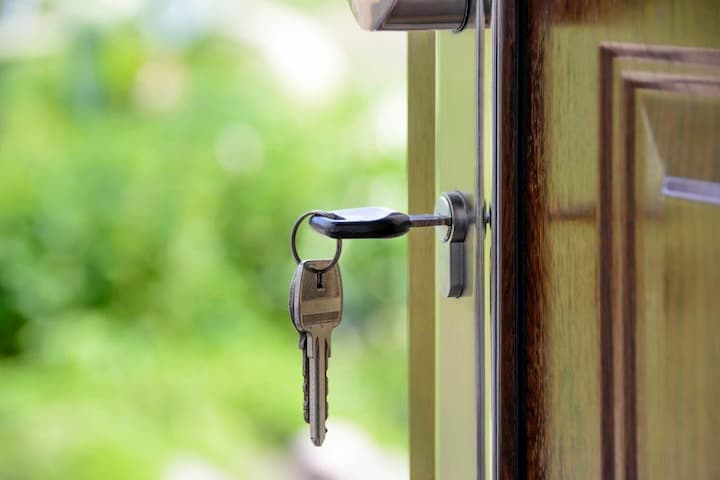Homes can be surprisingly dangerous places with the potential for both environmental hazards and safety concerns.
Homes can contain lead-based paint, asbestos, formaldehyde, radon, mold, imported drywall and other substances that can cause illnesses or chronic health problems. Homes are also full of safety hazards from stairs and stoves to bathtubs and swimming pools that can contribute to accidents, injuries or deaths.
Hazards at home
Substandard housing is a significant public health problem, according to Sandra Whitehead, director of healthy community design at the Florida Department of Health in Tallahassee and a technical advisor for the National Environmental Health Association, a nonprofit organization in Denver.
"People who reside in substandard housing are at increased risk for fire, electrical injuries, falls, rodent bites and other illnesses and injuries. Other issues include exposure to pesticide residues, indoor toxicants, tobacco smoke and combustion gases. Burning oil, gas and kerosene can release a variety of combustion products, including carbon monoxide, a well-known cause of illness and death," Whitehead said via email.
Homes can also harbor mold, unhealthy indoor air or residues from illegal drug manufacturing.
"Materials such as carpet and wallboard in homes used as meth labs have absorbed chemicals that can damage the nervous system, liver and blood production mechanisms. Children are at the highest risk, and exposure can trigger birth defects and developmental issues for babies in utero," Whitehead explained.
Home inspection
Many home hazards were originally introduced by builders and contractors, says Jay Gregg, director of marketing at Pillar to Post Professional Home Inspections, a Tampa, Florida-based franchise company with 450 outlets in the U.S. and Canada.
One way to find these hazards is get a home inspection, but that's only a starting point. A home inspector can't move furniture or boxes without the homeowner's permission and even a vacant house isn't 100 percent accessible.
First-time homebuyers especially should seek the help of a home inspector as they have never been through the homebuying process before and are not aware of the potential problems they could encounter as homeowners.
"We can't see behind drywall," Gregg says. "We aren't Superman. People end up doing renovations and (discover that) -- whoa! -- there's funky wiring behind this piece of drywall. There's no way a home inspector could see that."

Healthy home tips
These tips from the U.S. Department of Housing and Urban Development (HUD) can make your home safer and healthier:
- Keep your home clean and dry to discourage mites, cockroaches, rodents and mold.
- Be careful with pesticides. Improper use can make health problems worse since residues pose serious health risks.
- Keep your home free of lead paint, radon gas, pesticides, carbon monoxide, asbestos particles and other hazardous chemicals.
- Keep your home well-maintained. Remediate peeling paint promptly, especially if you live in an older home.
- Test for radon, a naturally occurring gas that enters home though soil, crawlspaces and foundation cracks, and remediate if needed.
- If your home has a well, periodically test water for quality and contaminants. Low cost test kits are available at major home improvement stores.
6 home safety tips
Preventive measures can make a home safer as well, according to Amy Artuso Heinzen, program manager at the National Safety Council, a nonprofit organization in Itasca, Illinois.
"Every family and every home is different," Heinzen said. "Walk around and assess potential hazards, particularly for the dynamics of your specific family."
Here are some of her tips:
- Install a fence around a swimming pool to keep out unsupervised children who can slip silently into a pool and drown without a sound being made.
- Keep toilet seat lids closed, never leave a bucket of water unattended and never leave a young child in a bathtub without an adult present. A young child can drown in a small amount of water.
- Create an emergency evacuation plan and practice it twice a year with your family, preferably during the day and at night. Plan at least two ways to exit your home in case one route is blocked.
- Make sure your home's windows aren't painted or nailed shut. If they are, get someone to open them so you and your family can escape in an emergency.
- Install smoke detectors and carbon monoxide alarms outside each sleeping area and on every level of your home. Test alarms monthly. If you or someone in your family has impaired hearing, install alarms that vibrate or flash a light.
- Make sure your hallways and bathrooms are well-lit at night to prevent slips, trips and falls.
"We all live with a certain amount of hazard," Heinzen said. "It's important to educate yourself and take proactive safety measures to do your best to avoid illness and injury while actively living and enjoying life."
(Image: HSH.com)
This article was updated by Keith Gumbinger.



